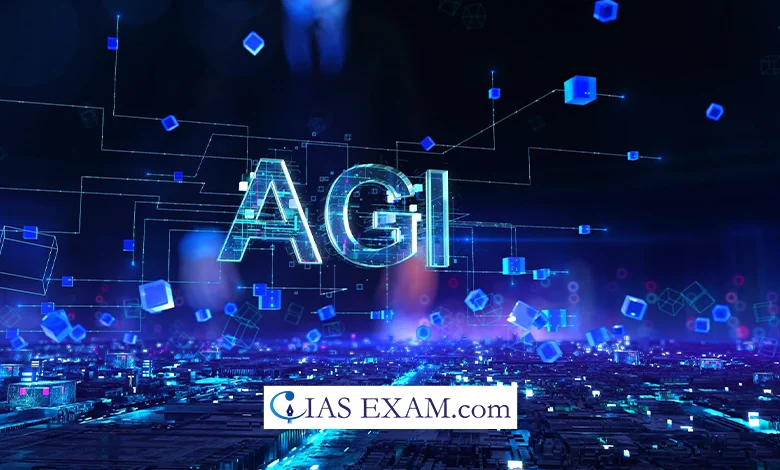Artificial General Intelligence (AGI)
Syllabus: Science and Technology[GS Paper-3]

Context
Sam Altman, CEO of OpenAI, recently stated his dedication to investing significant funds in the advancement of Artificial General Intelligence (AGI). Despite his enthusiasm for this cutting-edge technology, there is widespread concern within the tech industry.
About AGI
- AGI, or artificial general intelligence, refers to a hypothetical AI system that possesses the capacity to understand, learn and apply knowledge across a wide range of tasks and domains, similar to human intelligence.
- This is different from narrow AI, which is designed to perform a specific task.
- The concept of AGI is significant because it represents a potential future where machines could exhibit human-like intelligence and autonomy. However, it’s important to note that AGI is still purely theoretical at this stage, and most researchers believe we are decades away from realising AGI, with some predicting it won’t be achieved this century.
Why are people worried about AGI?
There are several reasons why people are worried about AGI:
- The emergence of AGI has raised numerous ethical and societal concerns, including worries about job displacement, privacy breaches, and the potential misuse of this technology.
- Furthermore, there are also valid apprehensions regarding the safety, security, and reliability of AI, encompassing issues like the loss of privacy and control, the spread of highly convincing fake content, and the emergence of novel legal and psychological dilemmas.
- Additionally, the economic impact of AGI is a topic of discussion, with the potential for both opportunities and disruptions in various industries, potentially exacerbating existing inequalities.
- Moreover, the concept of existential risks stemming from a misaligned superintelligent AGI or a tyrannical regime wielding such technology looms large in the collective consciousness.
Why is AGI still divisive in the AI field?
- Existential Risks: There is concern that AGI could pose existential risks to humanity if not aligned with human values and controlled effectively, leading to heated discussions.
- Ethical and Moral Implications: The potential capabilities of AGI raise ethical and moral concerns about its creation and use, including worries about autonomy, control, and the impact on humanity.
- AI Effect: The concept of the AI effect, where tasks once considered markers of human intelligence can now be performed by machines, further complicates the debate on AGI.
- Economic and Social Impact: The introduction of AGI could have significant economic and social consequences, such as job displacement and societal changes, adding to the debate over whether it should be pursued.
- Definitional Challenges: The lack of a universally accepted definition of AGI leads to ongoing debates about what qualifies as AGI and how it can be identified if achieved.
- Technological Feasibility: Some experts believe AGI is already within reach, while others argue that it may take many years or even centuries to develop, if at all.
Conclusion
In conclusion, AGI is a hypothetical AI system that possesses the capacity to understand, learn and apply knowledge across a wide range of tasks and domains. While AGI has the potential to revolutionise many industries, it also poses several risks, such as displacement of human workers and potential malicious use. Therefore, it is essential to have a clear understanding of AGI and its implications before it arrives.
Source: The Indian Express
UPSC Prelims Practice Question
Q. With the present state of development, Artificial Intelligence can effectively do which of the following? (2020)
- Bring down electricity consumption in industrial units
- Create meaningful short stories and songs
- Disease diagnosis
- Text-to-Speech Conversion
- Wireless transmission of electrical energy
Select the correct answer using the code given below:
a) 1, 2, 3 and 5 only b) 1, 3 and 4 only
c) 2, 4 and 5 only d) 1, 2, 3, 4 and 5Ans – “b”





.png)



